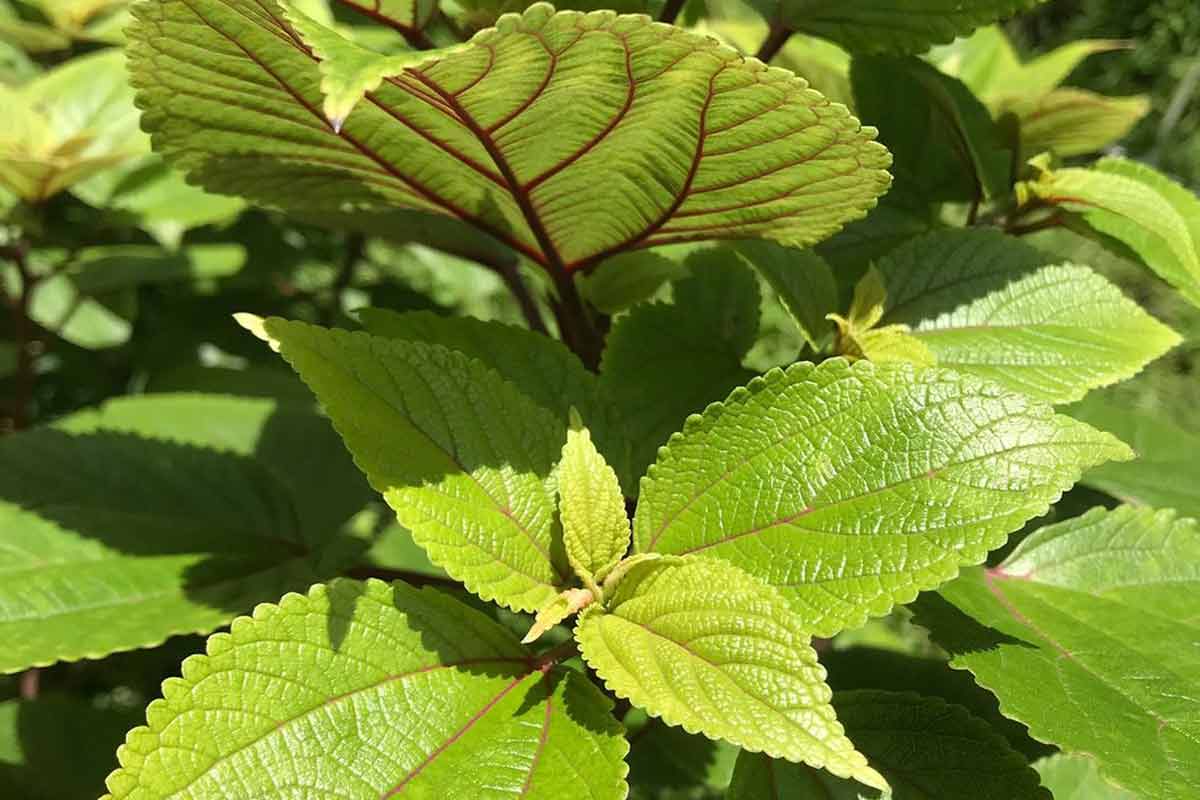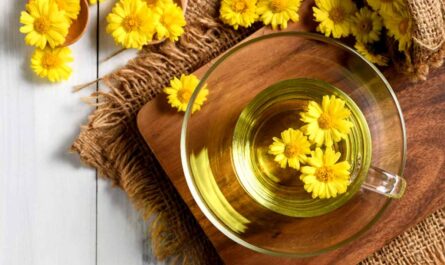Composting tea leaves: you’ve just finished a delightful cup of tea, the steam swirling and the aroma filling the air. But as you glance at the leftover tea leaves destined for the trash bin, a pang of guilt might strike. Must these flavorful companions truly meet their end in the landfill? Fear not, fellow tea lovers, for there’s a hidden potential within those used leaves – the power to transform waste into a valuable resource for your garden.
This article serves as your comprehensive guide to composting tea leaves, a practice that not only benefits the environment but also nourishes the very plants that provide us with these delightful beverages. We’ll delve into the wonders of composting tea leaves, exploring the environmental advantages and the various methods you can employ, both indoors and outdoors. We’ll address any potential challenges you might face, like pesky odors or unwanted visitors, and equip you with tips to optimize your composting journey. Finally, we’ll unveil creative ways to utilize your finished compost, transforming it from a pile of “waste” into a source of life for your plants.
Brewing Benefits: The Power of Composting Tea Leaves
For many, tea is a daily ritual, a comforting cup that warms the soul and invigorates the senses. But what happens to those spent tea leaves after the last sip? Traditionally, they find their way to the trash bin, destined for landfills. However, there’s a hidden power within these seemingly discarded leaves – the potential to transform waste into a valuable resource for your garden. Composting tea leaves isn’t just good for the environment; it’s a fantastic way to create nutrient-rich fertilizer that will nourish your plants and promote healthy growth.
Waste Not, Want Not: A Sustainable Solution
In a world increasingly focused on sustainability, composting offers a simple yet powerful way to reduce our environmental footprint. Landfills are overflowing, and every bit of organic matter we divert makes a difference. By composting your tea leaves, you’re giving them a second life, transforming waste into a valuable resource that can nurture new beginnings in your garden.
Imagine this: instead of ending up in a landfill, those tea leaves embark on a journey of transformation. Composted tea leaves become a rich, dark soil amendment, teeming with life and potential. This not only reduces waste but also creates a valuable resource that can benefit your garden for years to come.
Nutrient Richness: A Treasure Trove for Plants
Don’t be fooled by their unassuming appearance – tea leaves are a treasure trove of nutrients that can significantly benefit your plants. They contain essential elements like nitrogen, phosphorus, and potassium, often referred to as the “holy trinity” for plant growth.
-
Nitrogen: This crucial element fosters healthy leaf growth, giving your plants a vibrant and lush appearance.
-
Phosphorus: Phosphorus plays a vital role in root development and seed production, ensuring your plants have a strong foundation and the potential to flourish.
-
Potassium: Potassium helps regulate water balance and disease resistance, keeping your plants healthy and resilient.
By adding composted tea leaves to your soil, you’re essentially providing a slow-release fertilizer that nourishes your plants over time. This translates to stronger growth, improved resistance to pests and diseases, and potentially even higher yields for your vegetable garden.
Soil Improvement: Creating a Thriving Ecosystem
The benefits of composted tea leaves extend beyond their nutrient content. These little wonders can actually improve the overall health and structure of your soil. Here’s how:
-
Aeration Advantage: Composted tea leaves help create air pockets within the soil, allowing for better air circulation. This improved aeration benefits plant roots, allowing them to breathe more easily and promoting healthy growth.
-
Water Retention: Tea leaves, like other organic matter, have the ability to hold onto water. This is particularly beneficial during dry spells, as it helps the soil retain moisture and keeps your plants hydrated.
-
Microbial Magic: Composting creates a thriving ecosystem of microorganisms within the soil. These beneficial microbes help break down organic matter, releasing nutrients that plants can readily absorb. They also contribute to overall soil health and promote a balanced ecosystem.
By incorporating composted tea leaves into your soil, you’re not just feeding your plants – you’re creating a thriving environment that supports healthy root development, improved water management, and a more robust and resilient garden.
From Kitchen to Compost: Choosing Your Composting Method
Ever wondered where those tea leaves go after you’ve enjoyed a steaming cup of your favorite brew? Instead of tossing them in the trash and contributing to landfill waste, consider giving them a new lease on life – by turning them into nutrient-rich compost! Composting is a natural process that transforms kitchen scraps and yard waste into a valuable fertilizer for your garden. Tea leaves, with their unique properties, can play a starring role in this eco-friendly transformation.
This section will guide you through various composting methods, helping you choose the perfect system to turn your tea leaves into a potent garden booster.
The Classic Bin: Back to Nature’s Basics
The traditional outdoor compost bin is a tried-and-true method favored by many home gardeners. It’s a simple yet effective way to create nutrient-rich compost for your plants. Here’s a breakdown of the basic principles:
-
Building a Balanced Pile: The key to successful composting lies in creating a balanced environment for the microorganisms that break down organic materials. These tiny decomposers thrive on a combination of “brown” and “green” materials. Brown materials, like dried leaves and twigs, provide carbon, while green materials, like food scraps and yes, tea leaves, contribute nitrogen and moisture.
-
Layering It Up: To create an optimal composting environment, layer your browns and greens in a roughly equal ratio. Start with a brown layer at the bottom of your bin, followed by a green layer. Continue alternating layers as you add more kitchen scraps and yard waste.
-
Maintaining the Magic: For efficient decomposition, your compost pile needs a balance of moisture and air. If your pile seems dry, add some water to moisten the materials. Turning your compost bin regularly with a pitchfork or shovel helps aerate the pile and promotes faster decomposition.
Tea Time in the Compost Bin: Here’s where your used tea leaves come in! Tea leaves are considered a green material due to their high nitrogen content, making them a valuable addition to your compost pile. Simply add them to your bin along with other green materials like vegetable peels and fruit cores.
Pro Tip: While tea bags can technically be composted, choose biodegradable options made from natural materials like hemp or cotton. Avoid tea bags with synthetic materials, as they won’t break down completely in the compost pile.
Indoor Options: Composting Convenience at Home
For those living in apartments or with limited outdoor space, fear not! Several indoor composting options allow you to enjoy the benefits of composting from the comfort of your home.
-
Countertop Composting: Compact countertop compost bins are a convenient solution for smaller living spaces. These bins typically use a combination of aeration and filtration to manage odors and create nutrient-rich compost.
-
Worm Composting (Vermicomposting): Vermicomposting, or worm composting, is a fascinating process that utilizes worms to break down organic materials. Worms are nature’s composting champions, efficiently converting food scraps and tea leaves into a nutrient-rich fertilizer called vermicompost. Setting up a dedicated worm bin and providing proper care for your wiggly friends allows you to enjoy the benefits of composting indoors.
Adding Tea Magic Indoors: Whether you’re using a countertop compost bin or a vermicomposting system, tea leaves can be a welcome addition to your indoor composting endeavors. Just remember to follow the specific guidelines for your chosen system regarding moisture levels and proper materials.
No matter which composting method you choose, remember that tea leaves, once enjoyed in a steaming cup, can embark on a new journey as valuable contributors to your garden’s health. So, the next time you finish your tea, consider giving its leaves a second life in the wonderful world of composting!
Challenges and Solutions: Navigating the Composting Journey
Composting tea leaves is a fantastic way to transform kitchen waste into a valuable soil amendment. But like any worthwhile endeavor, the composting journey isn’t without its occasional bumps in the road. Fear not, fellow compost enthusiasts! This section will equip you with the knowledge to address common challenges and ensure your tea leaves decompose smoothly, turning into nutrient-rich compost for your garden.
Unwanted Visitors: Keeping Your Compost Bin Pest-Free
Imagine this: you excitedly reach for your compost bin, eager to add your used tea leaves, only to be greeted by a swarm of unwelcome fruit flies. While the sight (and smell) might be enough to deter even the most dedicated composter, there are simple solutions to keep these pesky critters at bay.
-
The Power of a Proper Seal: The first line of defense against fruit flies is a well-fitting lid on your compost bin. Ensure the lid closes securely, creating a barrier that discourages these uninvited guests from making themselves at home.
-
Burying Your Treasures: Another effective strategy is to bury food scraps, including your tea leaves, beneath a layer of brown materials like dry leaves or shredded cardboard. This not only helps with decomposition but also deters fruit flies from reaching the buffet underneath.
-
Location, Location, Location: Consider the placement of your compost bin. Ideally, it should be located in a well-ventilated area away from your kitchen or living spaces. This reduces the attractiveness of your compost to fruit flies and other unwanted visitors.
Remember: A healthy compost pile with a balanced mix of green and brown materials is less likely to attract pests. If you encounter a fruit fly infestation, don’t despair! By implementing these strategies and ensuring proper compost maintenance, you can effectively reduce their presence.
Taming the Odor: Maintaining a Balanced Compost Pile
Let’s talk about the not-so-pleasant aspect of composting – unpleasant odors. While a healthy compost pile shouldn’t emit strong offensive smells, an imbalance in moisture content can lead to problems. Here’s how to keep your compost pile odor-free and functioning optimally:
-
The Golden Ratio: Strive for a balance between “green” materials (food scraps like tea leaves) and “brown” materials (dry leaves, shredded cardboard). Green materials provide nitrogen, while brown materials add carbon. This balanced ratio ensures proper decomposition and minimizes the risk of foul odors.
-
Moisture Matters: A compost pile that’s too wet can become anaerobic (lacking oxygen), leading to unpleasant smells. Ideally, your compost should feel like a damp sponge. If it feels soggy, add more brown materials like shredded paper or cardboard to absorb excess moisture. Conversely, if your compost feels dry and crumbly, add some water or green materials to increase moisture content.
-
Turning the Tide: Regularly turning your compost pile with a compost fork or shovel aerates the materials and promotes faster decomposition. This not only helps manage moisture levels but also discourages the formation of anaerobic pockets that can lead to unpleasant odors.
Remember: A healthy compost pile with proper moisture content and good aeration is less likely to emit strong odors. By monitoring your compost and making adjustments as needed, you can ensure a pleasant composting experience.
The Breakdown Breakdown: Troubleshooting Common Composting Issues
Even the most diligent composter might encounter situations where their tea leaves, and other organic materials, seem to be decomposing at a snail’s pace. Here are some common reasons why your compost might not be breaking down as efficiently as you’d like, along with solutions to get things back on track:
-
The Nitrogen Blues: Nitrogen is a crucial element for the microorganisms responsible for decomposition. If your compost lacks nitrogen-rich materials like green tea leaves or coffee grounds, the breakdown process can slow down. To remedy this, add more green materials or a nitrogen supplement like aged manure.
-
Moisture Mischief: As mentioned earlier, moisture plays a vital role in decomposition. If your compost is too dry, the microorganisms won’t have the necessary moisture to thrive. Conversely, a compost pile that’s too wet can become anaerobic, hindering the breakdown process. Aim for that damp sponge consistency and adjust moisture levels as needed.
-
Particle Size Matters: The size of your compost materials can also influence the decomposition rate. Larger pieces of material take longer to break down. Consider chopping up food scraps and woody materials like twigs into smaller pieces to encourage faster decomposition.
Remember: Composting is a natural process, and it takes time. By understanding the factors that influence decomposition and making adjustments as needed, you can troubleshoot any challenges you encounter and ensure your tea leaves, along with other organic materials, decompose efficiently, transforming into nutrient-rich compost for your garden.

Brewing Success: Optimizing Your Compost Pile
Turning your leftover tea leaves into nutrient-rich compost isn’t magic, but it is a transformation that unlocks a treasure trove of benefits for your garden. However, to ensure your compost pile thrives and transforms those tea leaves into “gardening gold,” a few key practices come into play.
The Green-to-Brown Ratio: A Delicate Dance
Imagine your compost pile as a vibrant ecosystem teeming with microorganisms that break down organic matter and create nutrient-rich soil. These tiny decomposers have specific dietary needs, and just like us, they require a balanced meal! This is where the green-to-brown ratio comes in.
-
The Power of Greens: Green materials, like tea leaves, kitchen scraps, and fresh grass clippings, are nitrogen-rich. Nitrogen acts as a fuel source for the decomposers, accelerating the breakdown process. Tea leaves, with their nitrogen content, play a vital role in this green category.
-
Balancing with Browns: Brown materials, such as dried leaves, shredded cardboard, and woody prunings, provide carbon for the decomposers. While they might not seem as exciting as juicy fruits and vegetables, browns are equally important for creating a healthy and balanced compost pile.
-
The Golden Ratio: The ideal green-to-brown ratio for optimal decomposition is generally considered to be 3:1 (greens:browns). This ratio ensures there’s enough nitrogen (greens) to fuel the decomposers while also providing sufficient carbon (browns) for a healthy breakdown process.
So, how do tea leaves fit into this equation? Tea leaves, with their nitrogen content, are a fantastic addition to the “greens” side of your compost pile. They help create the perfect balance needed for efficient decomposition and nutrient production.
Finding Balance: Maintaining a perfect 3:1 ratio all the time can be tricky. Don’t worry, perfection isn’t necessary! A close estimate is perfectly acceptable. If your pile seems to be taking a long time to decompose, you might need to add more “greens” like tea leaves or kitchen scraps. Conversely, if your compost appears soggy or smells like ammonia (a sign of too much nitrogen), add more “browns” like shredded paper or dried leaves.
Moisture Matters: The Art of the Damp Sponge
Just like any living organism, your compost pile needs the right amount of moisture to thrive. Think of it like a damp sponge – not dripping wet, but not dry and crumbly either.
-
The Goldilocks Zone of Moisture: If your compost pile is too wet, it will become compacted and oxygen-deprived, hindering the decomposition process. Conversely, a compost pile that’s too dry will struggle to break down materials efficiently.
-
Tea Leaves and the Moisture Equation: Tea leaves themselves contribute some moisture to the compost pile. However, depending on how you brew your tea and whether you use loose leaves or bags, the moisture content can vary.
-
Monitoring Moisture Levels: The best way to ensure optimal moisture is to check your compost pile regularly. A simple squeeze test can reveal a lot. If water easily drips out when you squeeze a handful of compost, it’s too wet. If the material feels dry and crumbly, it needs more moisture.
-
Adjusting for Perfection: Adding brown materials like dry leaves or shredded cardboard can help absorb excess moisture. Conversely, if your compost pile is too dry, consider adding water in small amounts until it reaches the desired dampness level.
Chopping it Up: Aiding the Decomposition Process
While not strictly necessary for tea leaves, which are already relatively small, chopping up larger materials before adding them to your compost pile can significantly accelerate the decomposition process.
-
Surface Area Matters: The smaller the pieces of organic material, the more surface area is available for the decomposers to work their magic. This translates to faster breakdown and quicker composting results.
-
Cardboard and Leaves: If you’re adding cardboard or large leaves to your compost pile, consider breaking them down into smaller pieces. This will not only aid in faster decomposition but will also help create a more homogeneous compost mixture.
By following these simple tips, you can transform your compost pile into a thriving ecosystem that breaks down tea leaves and other organic materials efficiently, creating nutrient-rich compost to nourish your garden and reduce waste!
From Compost to Creation: Utilizing Your Tea-Infused Fertilizer
The journey of your tea leaves doesn’t have to end after a single, delightful cup. By incorporating them into your composting routine, you can transform them into a potent and natural fertilizer, brimming with life-giving nutrients for your plants. But the magic doesn’t stop there! Let’s explore the exciting ways you can utilize your tea-infused compost to create a thriving oasis for your indoor and outdoor greenery.
Potting Power: Brewing the Perfect Mix for Your Plants
Ever dreamt of creating your own custom potting mix, perfectly tailored to your plant babies’ needs? Well, your composted tea leaves hold the key! Here’s how you can use them to create a nutrient-rich and sustainable base for your potting endeavors:
-
A Foundation of Goodness: Finished compost, including your decomposed tea leaves, serves as a fantastic foundation for your potting mix. It provides essential organic matter that improves soil drainage, aeration, and overall structure. Think of it as the fluffy, breathable bed where your plant roots can thrive.
-
Customizing the Blend: The beauty lies in the ability to customize your mix based on your plant’s specific requirements. For extra drainage, consider adding perlite or coarse sand. For moisture-loving plants, incorporate some coco coir or peat moss. Remember, research the ideal potting mix composition for your chosen plant varieties.
-
The Joys of Repurposing: By using composted tea leaves in your potting mix, you’re not only nourishing your plants but also giving new life to what might otherwise be considered waste. It’s a win-win situation for both you and the environment!
Pro Tip: When creating your potting mix, ensure all the components are properly moistened but not soggy. A good rule of thumb is to squeeze a handful of the mix – it should hold its shape slightly but crumble easily when you release pressure.
Gardening Goodness: Nourishing Your Outdoor Oasis
Step outside and imagine your vegetable garden bursting with vibrant colors and your flower beds overflowing with fragrant blooms. Composted tea leaves can be the secret weapon in your horticultural arsenal!
-
A Feast for the Soil: As your composted tea leaves decompose further in the soil, they release a wealth of nutrients like nitrogen, phosphorus, and potassium. These are the essential building blocks that plants need for healthy growth, strong stems, and vibrant blooms or bountiful harvests.
-
Boosting Soil Microbiome: Beyond the readily available nutrients, composted tea leaves also contribute to a thriving soil microbiome. This complex community of microorganisms plays a vital role in breaking down organic matter, improving nutrient cycling, and promoting overall soil health.
-
A Sustainable Cycle: By incorporating composted tea leaves into your garden beds, you’re not just enriching the soil; you’re also creating a sustainable cycle. The very plants that nurture you with their bounty are being nourished in return, fostering a harmonious relationship between the gardener and nature.
Remember: The specific application method for composted tea leaves in your garden will depend on your soil conditions and plant varieties. Some gardeners choose to directly mix the compost into the soil, while others prefer to create a compost tea extract for foliar feeding (applying the liquid fertilizer directly to the leaves). Research the best approach for your specific garden needs.
Houseplant Hero: A Slow-Release Nurture for Indoor Companions
Our beloved houseplants bring a touch of life and greenery to our indoor spaces. But just like their outdoor counterparts, they too require nourishment to thrive. Composted tea leaves can be a fantastic natural fertilizer for your houseplant collection.
-
Slow and Steady Wins the Race: Unlike some chemical fertilizers, composted tea leaves offer a slow-release source of nutrients. This means your houseplants receive a steady stream of nourishment without the risk of burning or overfeeding.
-
A Simple Boost: There are several ways to utilize composted tea leaves for your houseplants. You can directly mix a small amount of compost into the potting mix during repotting. Alternatively, create a weak compost tea extract by steeping a small amount of compost in water and using it to water your plants occasionally.
Remember: Houseplants have varying nutrient requirements. For some, a little compost goes a long way. Always research the specific needs of your houseplant varieties before applying any fertilizer.
By incorporating composted tea leaves into your gardening routine, you’re not just nurturing your plants; you’re contributing to a healthier planet. It’s a simple yet powerful way to embrace a more sustainable lifestyle and create a flourishing haven for your greenery, both indoors and outdoors.
Beyond the Bin: Resources for Exploration
Turning your used tea leaves into nutrient-rich fertilizer is a fantastic way to reduce waste and nurture your garden. But the composting journey doesn’t end here! This section provides a treasure trove of resources to help you deepen your composting knowledge and become a composting champion. Motivation – Mind – Success – Thinking – Productivity – Happiness
Composting Websites and Organizations: A Helping Hand
Feeling overwhelmed by the world of composting? Fear not! Numerous websites and organizations offer a wealth of information, from step-by-step guides for beginners to troubleshooting tips for seasoned composters. Here are a few helpful resources to get you started:
-
The Composting Council: This non-profit organization is a leading voice in composting education and advocacy. Their website (https://www.compostingcouncil.org/) offers a comprehensive library of resources, including composting guides, troubleshooting tips, and information on finding composting programs in your area.
-
The Spruce Eats: This popular recipe and lifestyle website has a dedicated section on composting (https://www.wearespruce.co/blogs/cleaning/how-to-compost-at-home). Filled with clear instructions, helpful visuals, and insightful articles, it’s a fantastic resource for anyone looking to learn the basics of composting.
-
EPA’s Composting at Home Page: The United States Environmental Protection Agency (EPA) recognizes the importance of composting and offers a dedicated webpage (https://www.epa.gov/sustainable-management-food/composting) with valuable information on composting basics, benefits, and best practices.
These are just a few examples, and a quick internet search will reveal a treasure trove of composting websites and organizations waiting to be explored. Don’t hesitate to delve deeper and find resources that resonate with your learning style and composting goals.
Local Community Gardens and Composting Programs: The Power of Community
Composting can be a solitary pursuit, but it’s also a fantastic opportunity to connect with your community. Many local community gardens and composting programs offer workshops, demonstrations, and shared composting initiatives. Here’s why getting involved might be just the thing for you:
-
Learning from the Experts: Community gardens and composting programs are often staffed by knowledgeable volunteers and professionals who can share their composting wisdom and answer your questions.
-
Shared Resources, Shared Success: Some community gardens offer shared composting bins, allowing you to contribute your tea leaves (and other compostable materials) to a larger composting effort. This can be a great option, especially if you have limited space for a personal composting bin.
-
The Joy of Connection: Composting can be a social activity! Joining a community garden or composting program allows you to connect with like-minded individuals who share your passion for sustainability and gardening.
Finding Local Resources: A quick internet search or a call to your local parks and recreation department can help you locate community gardens and composting programs in your area. Don’t be shy – reach out and inquire about their composting practices and any opportunities for involvement.
Books and Articles: Deepening Your Composting Knowledge
The world of composting is vast and ever-evolving. If you’re eager to learn more and delve deeper into the fascinating science and practices behind successful composting, consider exploring books and articles on the subject. Here’s a glimpse into what you might find:
-
In-depth Guides: Numerous books delve into the intricacies of composting, offering detailed instructions on building and maintaining compost bins, managing different types of compostable materials, and troubleshooting common composting challenges.
-
Inspiring Stories: Several books and articles focus on the positive environmental impact of composting and the joy it can bring to your gardening endeavors. Reading about other successful composters can motivate you on your own composting journey.
-
The Science Behind the Compost Pile: For those curious about the fascinating biological processes that occur within a compost bin, there are resources that delve into the science of composting, explaining how organic matter decomposes and transforms into nutrient-rich fertilizer.
Finding Resources: Your local library is a fantastic starting point for finding books and articles on composting. Additionally, many online retailers offer a wide selection of composting resources to suit your learning style and interests. Tea, Coffee, Energy Drinks, Juice, Beverage, Smoothie, and more
Composting your tea leaves is a small yet impactful step towards a more sustainable lifestyle. By exploring the resources provided in this section, you can empower yourself to become a composting pro, reduce waste, and nurture a thriving garden – all while contributing to a healthier planet, one tea leaf at a time.
Conclusion: From Waste to Wonder – A Sustainable Sip
Composting tea leaves, along with other organic materials, is a simple yet impactful way to embrace a more sustainable lifestyle. By diverting waste from landfills and creating nutrient-rich compost, we contribute to a healthier planet and empower our gardens to flourish. So, the next time you savor a cup of tea, remember the hidden potential within those leaves. Embrace the power of composting and embark on a journey of transforming “waste” into a source of wonder for your plants and the environment.
A Sustainable Sip: Let this be the beginning of your exploration into the world of composting. With each cup of tea, you brew and compost, you take a small but meaningful step towards a greener future. So, sip your tea with a smile, knowing that you’re not just indulging in a delightful beverage, but also contributing to a more sustainable world, one tea leaf at a time.
Other Interesting Articles
- 20 Proven Health Benefits of Drinking Tea Before A Meal
- How Drinking Tea Can Boost Your Smoking Cessation Journey
- 21 Proven Health Benefits of Drinking A Cup of Tea At Night
- 19 Proven Health Benefits of Drinking Green Tea Before Bed
- 21 Proven Health Benefits of Drinking Tea Before A Meal
- 22 Proven Health Benefits of Drinking Milk Everyday for Men
- 20 Health Benefits of Drinking Milk Everyday for Weight Loss
- Irish Breakfast Tea vs English Breakfast Tea: Which is Better?
- Darjeeling Tea vs Green Tea: Comparison and Differences
- 18 Health Benefits of Drinking Milk Everyday for Weight Gain
- 21 Benefits of Drinking Milk Everyday for Skin and Hair
- 25 French Lavender Earl Grey Tea Health Benefits, Side Effects
- 18 Nilgiri Tea Health Benefits, How to Make, Side Effects
- 20 Proven Health Benefits of Drinking Milk in the Morning
- 18 Coco Loco Black Tea Health Benefits, Recipe, Side Effects
- 20 Yunnan Tea Health Benefits, How to Make, Side Effects
- 21 Lychee Black Tea Health Benefits, Recipe, Side Effects
- 20 Assam Breakfast Tea Health Benefits, Recipe, Side Effects
- 21 Earl Grey Blue Flower Tea Health Benefits, Side Effects
- 20 Health Benefits of Drinking Tea While Stressed & Anxious



